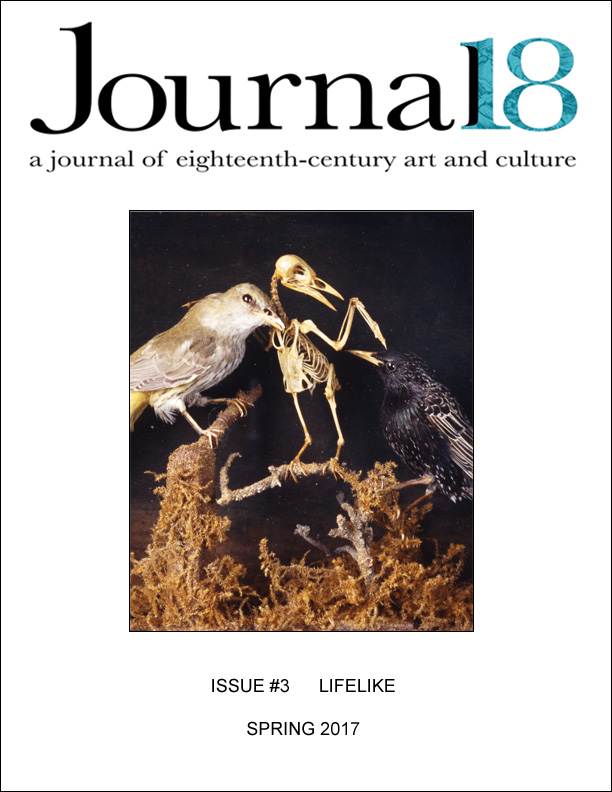 During the eighteenth century, a range of artistic productions sought to simulate motion and life in new ways. At the same time, individuals became ever more preoccupied with performing or embodying static works of art. Echoing contemporary discussions in artistic and literary discourses around vraisemblance and verisimilitude, as well as mimesis and imitation, these preoccupations also tapped in to larger social and intellectual debates about matter, mankind, and machines at a global level.
During the eighteenth century, a range of artistic productions sought to simulate motion and life in new ways. At the same time, individuals became ever more preoccupied with performing or embodying static works of art. Echoing contemporary discussions in artistic and literary discourses around vraisemblance and verisimilitude, as well as mimesis and imitation, these preoccupations also tapped in to larger social and intellectual debates about matter, mankind, and machines at a global level.
This issue of Journal18 explores these fundamental tensions between art and life, movement and permanence that obsessed the worlds of art, science, and entertainment during the eighteenth century. What was considered “lifelike” in this period? How did artworks—among them moving statues, automaton clocks, nautilus cups, and taxidermy tableaux—engage with this notion and participate in redefining it? What was at stake in staging a convincing simulation of life, and what purposes—political, pedagogical, or otherwise—did it serve? What role did ephemeral performances or spectacles play in generating such illusions and in shaping their significance? And how might we interpret these acts historically today?
In addition to full-length articles, we have assembled a series of shorter essays on the theme of “Waxworks.” More than any other material in the eighteenth century, wax seems to have provoked debates about the permeable boundaries between illusion and imitation, art and science, absence and presence. At the same time, objects made of wax—from La Specola’s famous anatomical Venus to busts portraying victims of the French Revolution modeled from life by Marie Tussaud—have the potential to disrupt traditional categories and hierarchies of art history, which is perhaps one reason why wax has emerged in recent years as such an exciting and provocative field of study.
Issue Editors
Noémie Étienne, University of Bern
Meredith Martin, NYU and Institute of Fine Arts, New York
ARTICLES
Staging Life: Natural History Tableaux in Eighteenth-Century Europe
Valérie Kobi
Vitalist Statues and the Belly Pad of 1793
Amelia Rauser
Nautilus Cups and Unstill Life
Eugenia Zuroski
Pyrotechnic Profusion: Fireworks, Spectacles, and Automata in Time
Lihong Liu
WAXWORKS
Vividness without Vitality: The Specola Venus’s Intersecting Afterlives
David Mark Mitchell
Antoine Benoist’s Wax Portraits of Louis XIV
Robert Wellington
Anatomy of the Bel Effet: Wax between Science and Art
Charles Kang
“The Fullest Imitation of Life”: Reconsidering Marie Tussaud, Artist-Historian of the French Revolution
Paris Amanda Spies-Gans
Cover image: Detail of stuffed Starling, Oriole and Bird’s Skeleton from Goethe’s Collection, before 1790. Goethe-Nationalmuseum, Weimar. © Klassik Stiftung Weimar/Thomas Korn.
